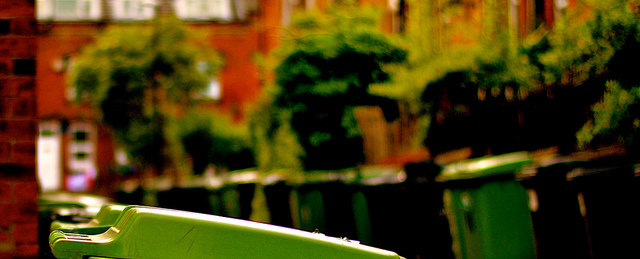Cathy MacLellan
COLUMNIST
Some days there are two or three bowls or bags in various locations in our kitchen. Like passing an offering plate, everyone is expected to make a contribution, no matter how small. Coffee grounds, used tea leaves, egg shells and various peels are the most common currency deposited. The more food consumed, the larger the offerings. These bowls receive our household organic waste before being transferred to the big brown bag in the green bin. Having a number of receptacles “started” arises when the smaller plastic pails usually used for kitchen waste are sitting in the garage or outside waiting to be cleaned – a nasty job no one really wants to do. Dealing with organic kitchen waste rates lower than cleaning toilets in some households.
Nothing says “gross” better than opening your green bin lid and seeing a mass of creepy crawly fly larva. But even though it’s a messy, smelly, daily chore that takes time, green bin use needs to increase. A resilient city must learn to deal with its own waste. Kitchen waste is a major contributor to the curbside garbage volume and the Waterloo landfill has only about 20 years worth of capacity left.
Municipal officials must breach a wall of resistance in order to stretch the life of our landfills. They have to convince the public that using the green bin works: the amount of garbage that was sent to the landfill from our curbs dropped by over half immediately when we started clearing our plates into the green bins instead of the trash.
Clearly, one key way to extend our landfill’s life is to divert and reduce waste that doesn’t belong there. However, the green bin program has been a bust in Waterloo Region. Most household garbage at the curb could migrate from garbage to green bin or the blue box—and perhaps we should look to other cities for inspiration on how to make the migration happen.
New York City recently set 2030 as their target date for becoming a zero-waste city, which means that less than 10 per cent of New York’s waste will end up in a landfill. Incineration and transporting waste away has become hugely expensive and limits their ability to maintain other services that make the city great. We in Waterloo Region should take note.
Innumerable creative attempts have been made to educate people about the waste problem in an effort to get them to change their behaviour. But despite online “how to” videos, startling photo essays of people lying in one week of their own waste and the sincere and hopeful guidelines that make their way to mailboxes regularly, green bin underuse persists.
Seattle, taking a more drastic route, is publicly shaming households who do not separate their garbage by attaching large red signs to their bins on garbage day. After six months, people face fines for not separating their garbage. And so we reach the ultimate, and usually successful, tools for changing behaviour: forcing you to keep stinking garbage in your garage and, failing that, taking your money.
Because we in Waterloo Region didn’t take to the green bin program with the same gusto as we did the locally founded blue-box program, we now face significant changes to our waste management practices. Now, you either put your organic wastes in the green bin or have them fester away in a garbage bag for an extra week. If this reform doesn’t work there may be a future financial hit for not separating or reducing garbage volume. Building resilience is pursuing, not the path of least resistance. Doing the right thing is rarely neat and easy. There will undoubtedly be complaining but there will also, finally, be action that will extend the life of our landfills and sustain our great quality of life in Waterloo Region.




Leave a Reply